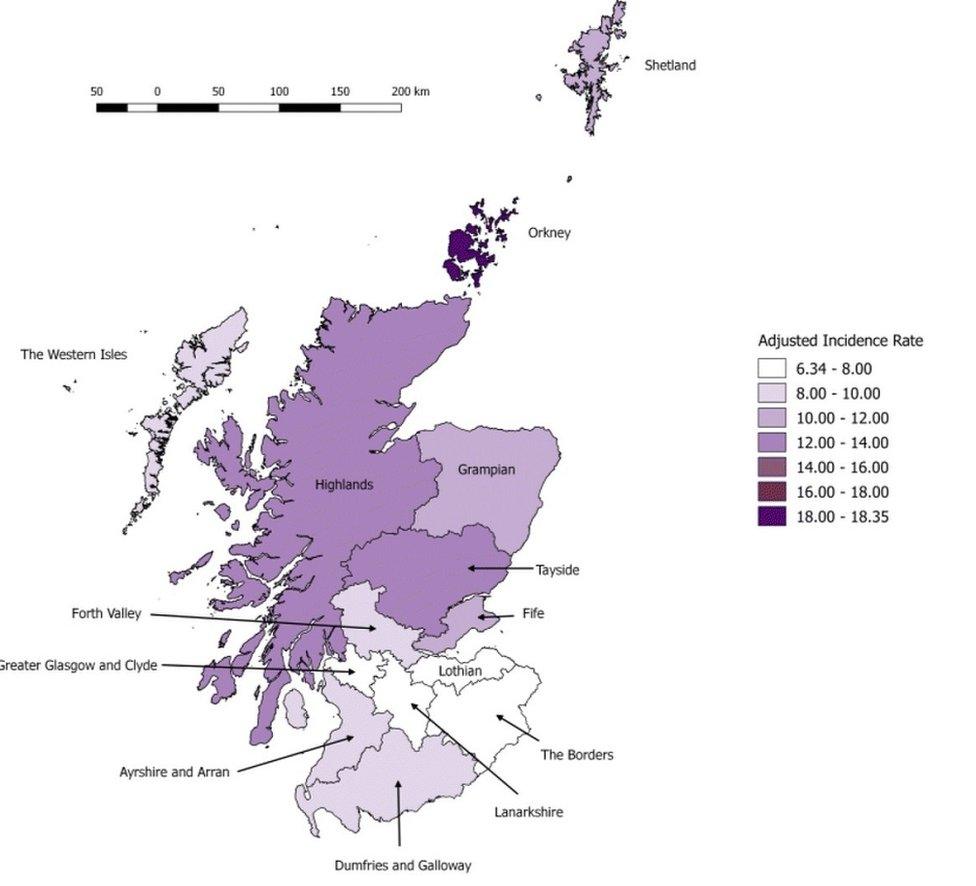Orkney and Tayside have highest rates of multiple sclerosis
- Published

Multiple sclerosis is a condition which can affect the brain and spinal cord resulting in some people needing to use a wheelchair
New research by the University of Edinburgh confirms that Scotland has one of the highest rates of Multiple Sclerosis diagnoses in the world.
The rates vary between regions, with higher incidences in Orkney and Tayside.
There was found to be a lower rate across the central belt, and in the Borders.
Women are more susceptible than men, according to researchers at the Anne Rowling Regenerative Neurology Clinic.
The findings - taken from the Scottish Multiple Sclerosis Register, external, and published in the Journal of Neurology - provide the first detailed snapshot of those affected by the disease across the country.
While Orkney tops the table, Tayside has the highest incidence of the disease in mainland Scotland. Rates of diagnosis were three times higher in Orkney than the central belt and Borders, and MS rates in women were double that of men.
For example, a woman in Orkney has a one in 50 chance of developing MS during her lifetime, compared with about one in 600 for a man living in the Borders.


On average, the study found:
The Scottish incidence rate was 8.76 per 100,000
Regional rates varied significantly between health boards
The national female-to-male ratio was 2.3:1
Lifetime risk ranged from 19.9/1000 for females in Orkney to 1.6/1000 for males in the Borders
The study adds weight to previous findings that disease rates are greater in northern regions, but suggests that other factors could also be important. Figures showed that incidence of the disease in Shetland was more than one-third lower than in Orkney, despite Shetland being located further north.
On the mainland, rates of MS in Tayside were almost double those in the Lothians; 404 cases in Tayside - with an overall population of 410,250 - versus 478 cases in the Lothians, which have a population of 836,610.
The team behind the report says further studies are needed to probe the underlying causes of regional and gender differences.
Dr Patrick Kearns, from the University of Edinburgh's Centre for Clinical Brain Sciences, said: "The Scottish MS Register is a powerful new resource - the result of substantial far-sighted investment - which builds on the strength of the NHS in Scotland. It allows us to study, in detail, the geographic risk of developing MS.
"There is much more work to be done, not least to further ensure the accuracy and precision of the register. However, our hope is that by understanding more precisely where the areas of higher and lower risk are found in Scotland, we can start to work out why."
- Published8 October 2013
